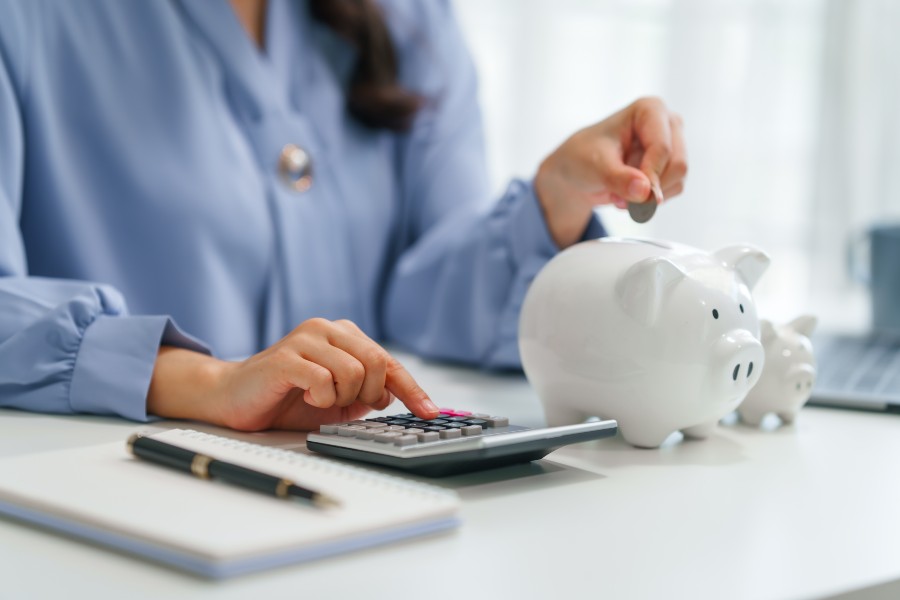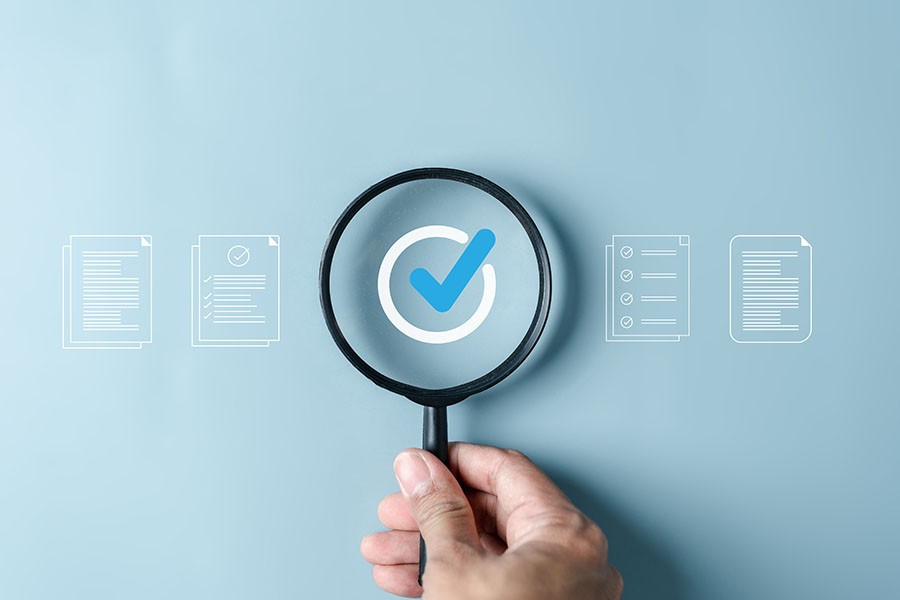Property, plant, and equipment (PP&E) refers to a company’s long-term tangible assets that are used in its operations to generate income. These assets are expected to last for more than one accounting period, typically for a year or more, and are essential for the business to function. Understanding a company’s investment in PP&E can be insightful for investors. A large PP&E investment might indicate a company’s confidence in its future growth and ability to generate profits.
Key Takeaways
- PP&E assets are fixed assets because they are not easily converted to cash. They are unlike inventory, which is intended to be sold relatively quickly.
- PP&E is on a balance sheet under non-current assets, which are investments expected to benefit the company for an extended period.
- Because PP&E helps generate revenue for multiple years, the cost of PP&E is deducted over multiple years. Depreciation is used to spread the cost of the asset over its useful life.
- While land is generally included in PP&E, it’s important to note that, unlike other assets, it typically cannot be used to claim depreciation expense.
Property, Plant, & Equipment Examples
Our related resources:
When To Recognize PP&E in Financial Statements
You should recognize PP&E in your financial statements only when certain criteria are met. The initial recognition involves recording the cost as an asset on your balance sheet and beginning to depreciate the asset (except for land) over its useful life, allocating its cost as an expense over time.
Here are the key considerations for recognizing PP&E:
- Ownership: You should recognize PP&E when legal ownership of the asset has been transferred to your business. This typically occurs when the asset is acquired and all necessary legal documentation (such as purchase agreements) is completed.
- Control: Your business should have control over the asset, meaning you can use it for its intended purpose and derive economic benefits from it.
- Future economic benefits: The asset must be expected to generate future economic benefits for your business. This includes benefits such as revenue generation, cost savings, or other economic advantages.
- Measurable cost: The cost of the asset should be reliably measurable. This includes the purchase price and any additional costs directly attributable to bringing the asset into use, like taxes, shipping, and installation.
- Probable flow of resources: It should be probable that future economic benefits associated with the asset will flow to your business, and the cost of the asset can be measured reliably.
Essentially, you recognize a PP&E asset when it’s ready for its intended use and the future economic benefits and cost are measurable and certain. Here are some specific situations when you would recognize a PP&E asset:
- Purchasing a new building or equipment: When you buy a new factory, office space, or machinery, you recognize it as a PP&E asset at its total cost.
- Constructing a new building: If your company constructs a new building, the construction costs like materials and labor are capitalized as a PP&E asset.
- Capitalizing leasehold improvements: If you lease a property and make permanent improvements that become part of the building, these improvements can be capitalized as PP&E.
Recording PP&E: Factors To Keep in Mind + Example
There are a few things to keep in mind when recording PP&E in accounting, which will help ensure accurate and compliant financial reporting.
Initial Recognition
- Cost determination: Determine the total cost of acquiring the PP&E. This includes the purchase price, tax, shipping, installation, and any other costs directly attributable to bringing the asset into use.
- Classification: Classify the asset as PP&E if it meets the criteria of a tangible, long-term asset used in business operations.
Journal Entry at Recognition
- Debit the PP&E account: Record the total cost of the asset in the PP&E account. This increases the asset value on the balance sheet.
- Credit the relevant accounts: Depending on how the asset was acquired (cash purchase, loan, etc.), credit the appropriate accounts, such as Cash, Accounts Payable, or Loans Payable.
See this sample journal entry, which illustrates a $5,000 debit to the PP&E account and credit to the Cash, Accounts Payable, or Loans Payable account.
Debit | Credit | |
|---|---|---|
PP&E Cash, Accounts Payable, or Loans Payable | 5,000 | 5,000 |
Additional Expenditures
- Types of additional expenditures: Sometimes, you might incur additional costs related to existing PP&E assets, such as improvements or major repairs.
- Classifying capital expenditures: If the expenditure extends the asset’s useful life or significantly increases its value, it’s considered a capital expenditure (Capex).
- Adding capex to the PP&E account: Capital expenditures are added to the gross PP&E account for the specific asset and are subject to depreciation going forward.
Subsequent Measurement
- Depreciation: Determine the depreciation method (e.g., straight-line and double-declining balance) and estimate the asset’s useful life. Record periodic depreciation expenses to allocate the asset’s cost over its useful life.
- Accumulated depreciation: Create an Accumulated Depreciation contra-account under PP&E to track the total depreciation recognized on the asset. Accumulated Depreciation reduces the asset’s carrying amount on the balance sheet.
Impairment Testing
- Impairment indicators: Regularly assess whether there are indicators of impairment, like significant changes in market conditions or technological advancements.
- Determining impairment: If impairment is indicated, perform impairment testing to determine if the asset’s carrying amount exceeds its recoverable amount. If impaired, record impairment losses.
Disposal
- Disposing of PP&E assets: When you dispose of a PP&E asset by selling or scrapping it, you must remove it from your accounting records. The removal involves a few steps:
- Calculate the asset’s book value: The formula for this is original cost minus accumulated depreciation.
- Remove the cost: Remove the asset’s cost from the gross PP&E account
- Remove accumulated depreciation: Remove the accumulated depreciation from its corresponding account
- Recognize any gain or loss on disposal: Compare the book value to the disposal proceeds
Reporting
- Balance sheet reporting: Include PP&E and related accumulated depreciation on the balance sheet. PP&E is a non-current asset, while accumulated depreciation is a contra-asset deducted from PP&E to show the net carrying amount.
- Income statement reporting: Report depreciation expense on the income statement, reflecting the portion of the asset’s cost allocated as an expense during the reporting period.
Let’s consider an example of recording property, plant, & equipment. Suppose that ABC Manufacturing purchased a new machine for its production facility for $50,000 on January 1, 2023. Additional costs for transportation and installation amount to $5,000. The machine is expected to have a useful life of five years with no residual value.
This is how ABC Manufacturing should record the transaction:
Initial Purchase
Depreciation
- Calculate annual depreciation using a suitable method, like straight-line depreciation
- If using straight-line depreciation, divide the depreciable amount ($55,000) by the useful life (5 years) to get an annual depreciation of $11,000.
Yearly Adjustment
At the end of each year, record depreciation expense.
Debit | Credit | |
|---|---|---|
Depreciation Expense | 11,000 | |
Machinery: Accumulated Depreciation | 11,000 |
Balance Sheet Impact
- Machinery (PP&E): $55,000 (original cost) – $11,000 (accumulated depreciation) = $44,000 (net book value) after Year 1.
- Accumulated Depreciation: $11,000 after Year 1
Reporting
- Income statement: Shows $11,000 depreciation expense annually
- Cash flow statement: Depreciation is added back to net income for operating cash flow calculations as it is a non-cash expense
Repairs & Replacements of PP&E
Repairs and replacement of PP&E are common maintenance activities in businesses. However, it’s crucial to differentiate between expenses that maintain the asset’s current condition (repairs) and expenses that improve or extend the asset’s useful life (replacements).
The accounting treatment for repairs and replacements depends on the nature and significance of the work done. Proper classification ensures accurate financial reporting and compliance with accounting standards.
Repairs
- Routine maintenance: Expenses incurred for routine repairs and maintenance to keep assets in good working condition are generally expensed in the period they occur and are not capitalized.
- Minor repairs: Small repairs that don’t extend the asset’s useful life or significantly improve its efficiency are expensed as incurred. Examples include replacing small parts or performing minor fixes on machinery or equipment.
Replacements
- Significant replacements: When a component or part of an asset is replaced and the replacement extends the asset’s useful life, enhances its efficiency, or increases its capacity beyond its original specifications, the cost of the replacement is capitalized. This means the cost is added to the carrying amount of the asset on the balance sheet and depreciated over its remaining useful life.
- Capitalization criteria: The replacement cost should meet the criteria for capitalization, including increasing future economic benefits or improving the asset beyond its original condition. The old part or component’s carrying amount may be removed from the books, and any difference between the replacement cost and the carrying amount of the old part is adjusted accordingly (usually recognized as a gain or a loss).
Accounting Entries
- Repairs: Debit Repair and Maintenance Expense (or a specific repair expense account) and credit Cash or Accounts Payable.
- Significant replacements: Debit PP&E for the cost of the replacement and credit Cash or Accounts Payable. If there is a disposal of the old part, debit Accumulated Depreciation for the old part’s carrying amount and credit the PP&E account for the same amount.
See our sample journal entry for repairs, with a PP&E expense of $5,000:
.
Debit | Credit | |
|---|---|---|
Repair & Maintenance Expense | 5,000 | |
Cash or Accounts Payable | 5,000 |
Below is our sample journal entry for a significant replacement cost of $10,000:
Debit | Credit | |
|---|---|---|
PP&E | 10,000 | |
Cash or Accounts Payable | 10,000 |
If there has been a disposal of old parts worth $3,000, you would record the journal entry like this:
Debit | Credit | |
|---|---|---|
Accumulated Depreciation | 3,000 | |
PP&E | 3,000 |
Frequently Asked Questions (FAQs)
No, PP&E itself isn’t a capital expense; it is a category of assets, not an expense. It represents the physical, long-term assets a company owns. A capital expense refers to the money a company spends to acquire or improve these long-term assets, including PP&E. So, the purchase of PP&E incurs a capital expenditure.
No, PP&E is not the same as inventory. PP&E are long-term assets used in the day-to-day operations of a business that are unintended for sale but facilitate production or other core functions, while inventory is the items a company holds for resale to customers in the ordinary course of business. Inventory is considered a current asset because it is expected to be converted to cash within a year.
PP&E has a normal balance of a debit. It’s a category of assets on the balance sheet. Acquiring PP&E is typically recorded with a debit to the PP&E account and a credit to the corresponding payment method.
No, PP&E assets are generally considered non-liquid or illiquid. This means these can’t easily be converted into cash quickly. Since PP&E consists of tangible items like buildings, machinery, and vehicles, selling these assets often takes time and effort to find a buyer willing to pay a fair price. Also, the value of PP&E declines over time due to wear and tear or obsolescence, meaning they may not be worth as much when you eventually sell them.
Bottom Line
PP&E plays a fundamental role in the financial health and operational capabilities of businesses across various industries. These tangible assets—including land, buildings, machinery, and equipment—are essential for conducting day-to-day operations, manufacturing goods, and delivering services.
Understanding the lifecycle of PP&E, from acquisition to depreciation and potential disposal, is crucial for accurate financial reporting, asset valuation, and decision-making within organizations.


